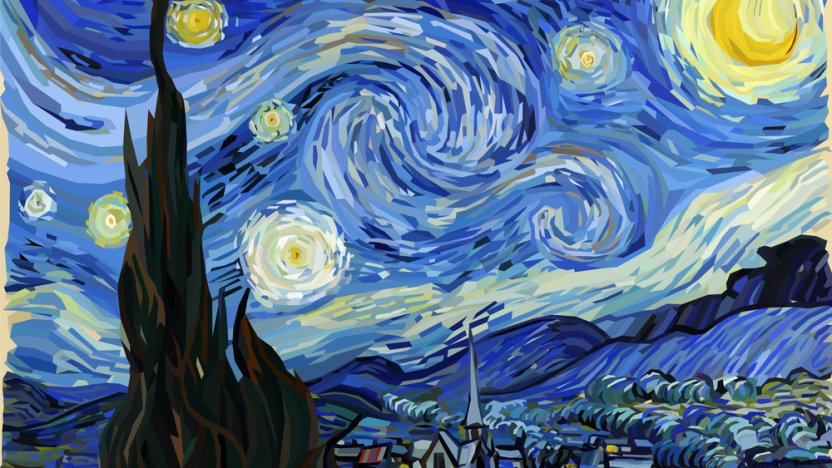Just How Trump Art Shows Modern Political Satire in the Painting World
Wiki Article
Getting Started on an Aesthetic Journey Via the Lyrical Interpretations of Nature in Impressionist Landscapes
In the realm of art history, the Stylist activity sticks out as an essential duration that revolutionized the way nature was depicted on canvas. Artists such as Claude Monet, Camille Pissarro, Edgar Degas, Berthe Morisot, and Vincent Van Gogh caught the essence of the environment via their unique interpretations, producing landscapes that go beyond simple graph. Each brushstroke, each play of light and darkness, and each color selection in their jobs talks volumes regarding the musicians' deep link to nature and their ability to translate its charm onto the canvas. As we check out the lyrical analyses of nature in Stylist landscapes, we are invited to submerse ourselves in a world where truth and feeling link, supplying a glimpse right into the musicians' profound appreciation for the environment.The Captivating Brushstrokes of Claude Monet
Claude Monet's proficiency of brushstrokes transcends plain technique, imbuing his landscapes with an angelic quality that enthralls and captivates customers - trump art. His cutting-edge use shade and light, incorporated with his unique brushwork, produces a feeling of movement and life within his paints. Monet's renowned collection of works illustrating water lilies and his renowned haystacks display his ability to catch the fleeting effects of light and environment
Checking Out Light and Darkness With Camille Pissarro
Embodying a comparable respect for the interplay of light and shadow, Camille Pissarro's artistic vision unfolds as an unified exploration of the environment's luminescent subtleties. Pissarro, a crucial figure in the Impressionist activity, masterfully captured the vibrant relationship in between light and shadow in his landscapes. His skilled use of color and brushwork allowed him to convey the subtle changes in light that specify various times of day and seasons.Pissarro's paintings commonly feature spotted sunlight infiltrating fallen leaves, casting complex patterns of light and shadow on the earth below. In jobs such as "Hoar Frost, the Result of Snow, Pontoise," Pissarro skillfully depicts the crisp illumination of winter months sunlight compared with the great shadows that specify the snowy landscape. By embracing both light and darkness in his compositions, Pissarro invites viewers to submerse themselves in the natural elegance and short-term effects of light on the planet around them.

Through Pissarro's works, we are advised of the transformative power of light and darkness, welcoming us to stop and value the short lived minutes of charm present in the daily landscapes that surround us.
A Symphony of Colors by Edgar Degas
Edgar Degas orchestrates a dynamic symphony of colors in his masterful artworks, infusing his compositions with a vibrant interaction of tones that astound the visitor's stare. Recognized largely for his ballet professional dancers and intimate scenes of Parisian life, Degas skillfully controlled colors to share state of mind and motion in his paints. trump art. His usage of strong, different shades and subtle tonal variations created a sense of deepness and vibrancy within his worksDegas' shade scheme typically included abundant blues, deep greens, and cozy oranges, which he used with positive brushstrokes to capture the essence of his topics. Whether depicting a ballerina mid-performance or a group of buddies speaking at a cafe, Degas' shades not only depicted the scene yet likewise evoked a feeling of feeling and energy.
Moreover, Degas' experimentation with light and darkness added an added layer of complexity to his color compositions, boosting the general atmosphere of his paints (trump art). Through his skillful manipulation of shade, Degas produced an aesthetic symphony that continues to reverberate with viewers today
Discovering Nature's Peacefulness With Berthe Morisot
Berthe Morisot's creative vision supplies a peaceful separation from the dynamic shade symphonies of Edgar Degas, as she records the serenity of nature in her expressive landscapes. Understood for her fragile brushwork and intimate representations of day-to-day life, Morisot's landscapes exhibit a feeling of peace and consistency.Morisot's paintings commonly include soft, soft tones that share a sense of calmness and serenity. Her jobs, such as "The Cradle" and "Summertime's Day," showcase her capability to record the subtle charm of nature in such a way that is both relaxing and reflective to the viewer.
Unlike some of her Impressionist counterparts who focused on strong shades and vibrant make-ups, Morisot liked to create mild, introspective scenes that invite the audience to stop briefly and mirror. Through her skillful usage of light and shadow, Morisot produces a feeling of serenity that reverberates with the visitor on a deep emotional level.
The Emotional Landscapes of Vincent Van Gogh
Vincent Van Gogh's landscapes strongly convey a deepness of feeling via their vibrant brushwork and meaningful use shade. The Dutch post-impressionist artist is renowned for his capability to catch intense and raw feelings in his paints, going beyond traditional representations of nature. Van Gogh's troubled personal life, marked by mental health struggles, considerably influenced his art, infusing his landscapes with a sense of unease, melancholy, or pep.In jobs such as "Starry Night" and "Wheatfield with Crows," Van Gogh's swirling brushstrokes and vibrant shade options evoke an extensive psychological response from try these out visitors. The rough skies and agitated landscapes in his paints mirror his internal turmoil and emotional turbulence, inviting visitors to look into the intricacies of his mind.
Van Gogh's distinct visual language, defined by exaggerated perspectives and vibrant use color, creates landscapes that resonate with visitors on a deeply psychological level. Via his art, Van Gogh invites us to see nature not equally as an external fact but as a mirror of our innermost feelings and feelings.
Verdict
Finally, the impressionist landscapes of musicians such as Claude Monet, Camille Pissarro, Edgar Degas, Berthe Morisot, and Vincent Van Gogh provide a fascinating and distinct aesthetic analysis of nature. Through their use of brushstrokes, light, feeling, and color, these artists have actually created a harmony of photos that evoke a feeling of tranquility and charm in the all-natural world. Their jobs remain to influence and charm viewers with their lyrical analyses of the landscapes around us.Each brushstroke, each play of light and darkness, and each color option in their works talks volumes regarding the musicians' deep connection to nature and their capability to translate its appeal onto the canvas. His innovative use of shade and light, combined with his distinctive brushwork, produces a feeling of activity and life within his paintings. His proficient usage of shade and brushwork allowed him to communicate the refined view changes in light that specify different times of day and seasons.

Report this wiki page